As a collector it is very easy to run out of money or space for a ceramic collection. Different people deal with this problem by ignoring it in different ways. Overcrowded homes, ceramics kept in storage, loans to museums are a few of those ways. I have never felt too bad about selling items to make room for more, so here is a selection of some of the nicest things I have been privileged to own but which are now in the hands of new owners.
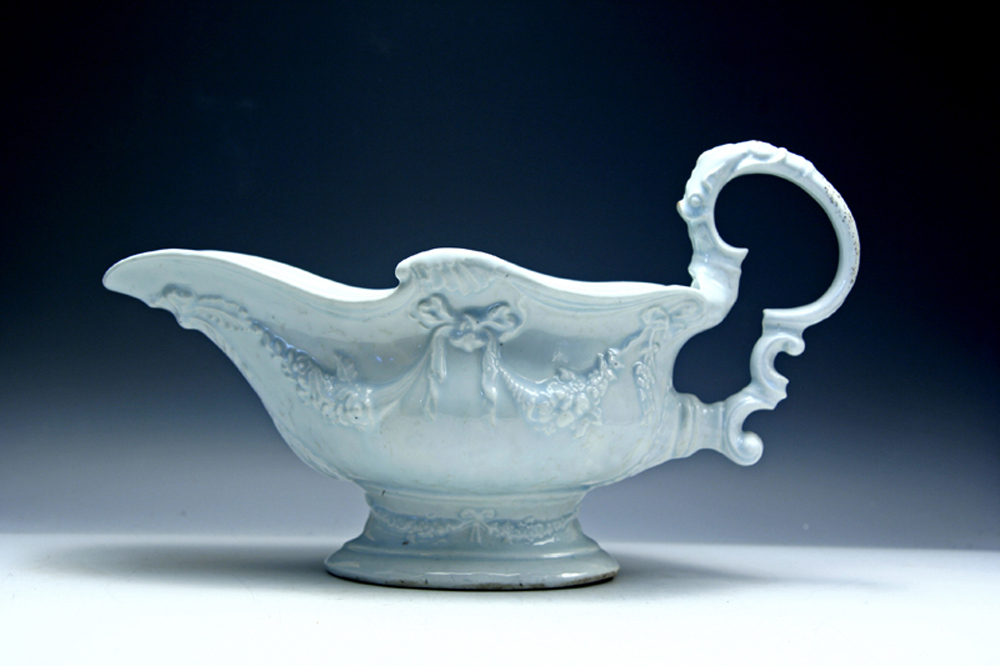
A fine Lunds Bristol sauceboat, c 1750. Silver-shaped, left in the white with tin added to the glaze to enhance the colour. A classic rococo sauceboat which the traveller Dr. Pococke recorded seeing at the Lunds factory in 1750, to be sold for 15 guineas a pair.

A Barr Flight and Barr Worcester teacup and saucer c 1810. The fine feather painting and the gilding are exceptional, showing the wonderful skills employed at Worcester during this period.
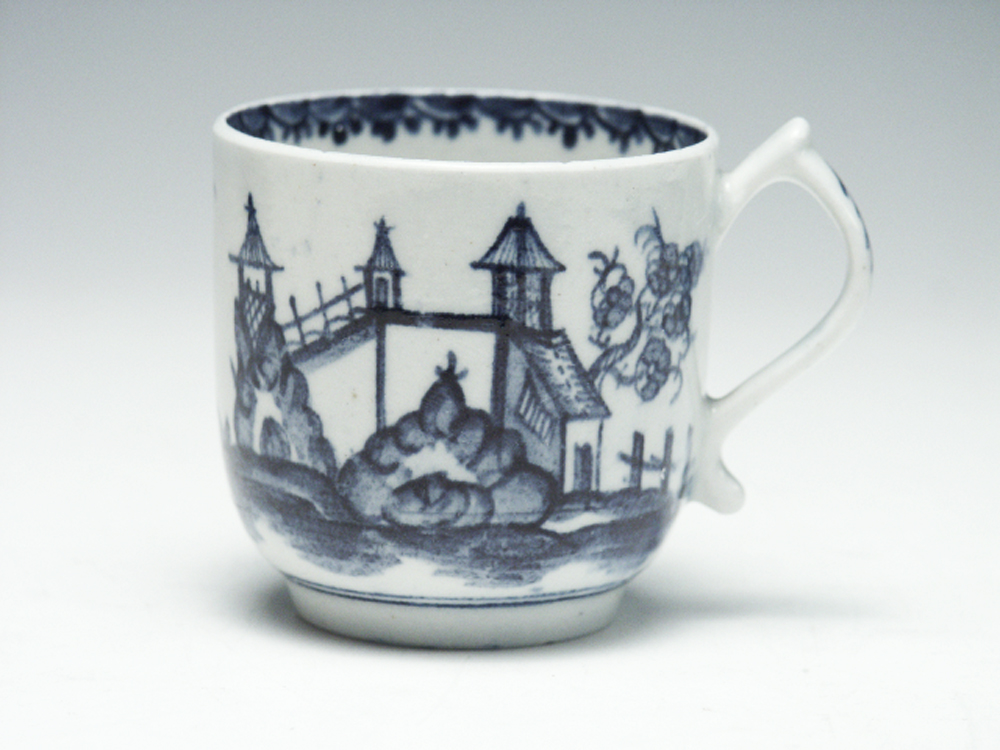
This Lowestoft coffee cup c 1763-5 in a rare pattern was made for the middle market but it’s delightful naive style is charming. The buildings illustrated do not look as if they would pass building regulations today and may have been influenced by the fanciful structures published in the Ladies Amusement in 1762.
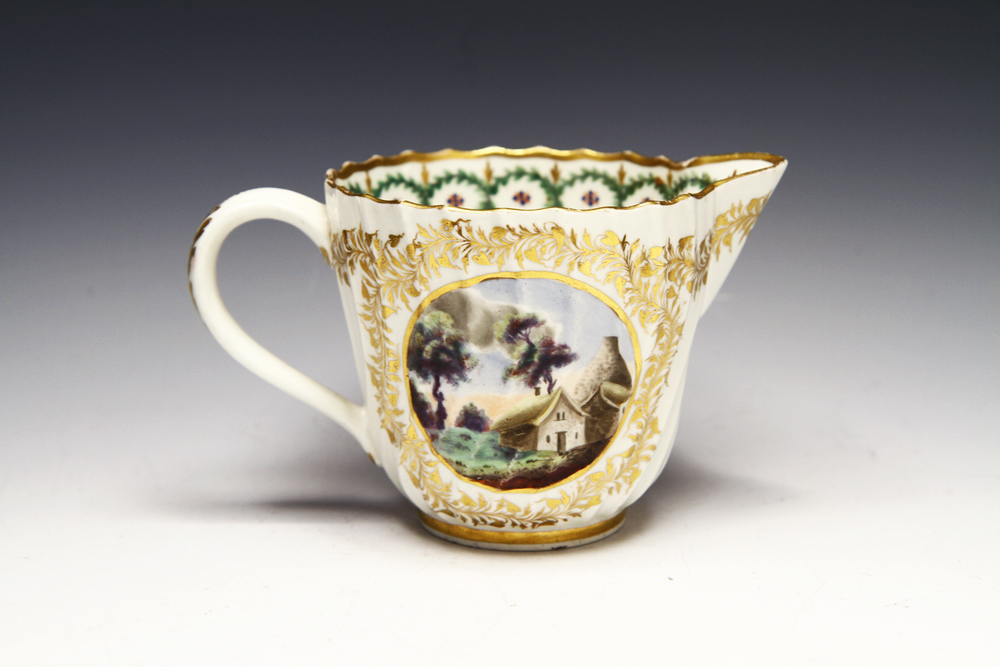
In 1793 the great ceramic artist Fidelle Duvivier was working for the Caughley factory in Shropshire. He was fond of putting kilns into his landscapes and this must have encouraged other Caughley painters, as in this case, to do the same. This allows a very accurate dating for this particular milk jug.
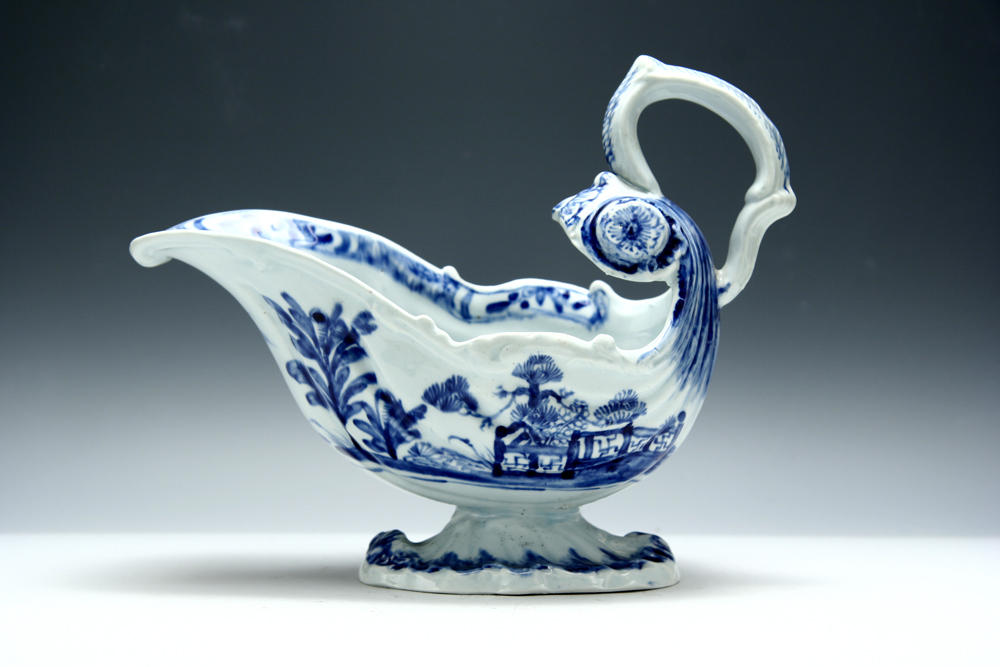
Nicholas Crisp at the Vauxhall factory produced some wonderful porcelain. As a jeweller he was influenced by silversmiths working at the time. In this instance the fine rococo sauceboat seems to be a tribute to the silver of Nicholas Sprimont who, by the time this piece was made c 1755, had transfered his efforts to the Chelsea porcelain factory.
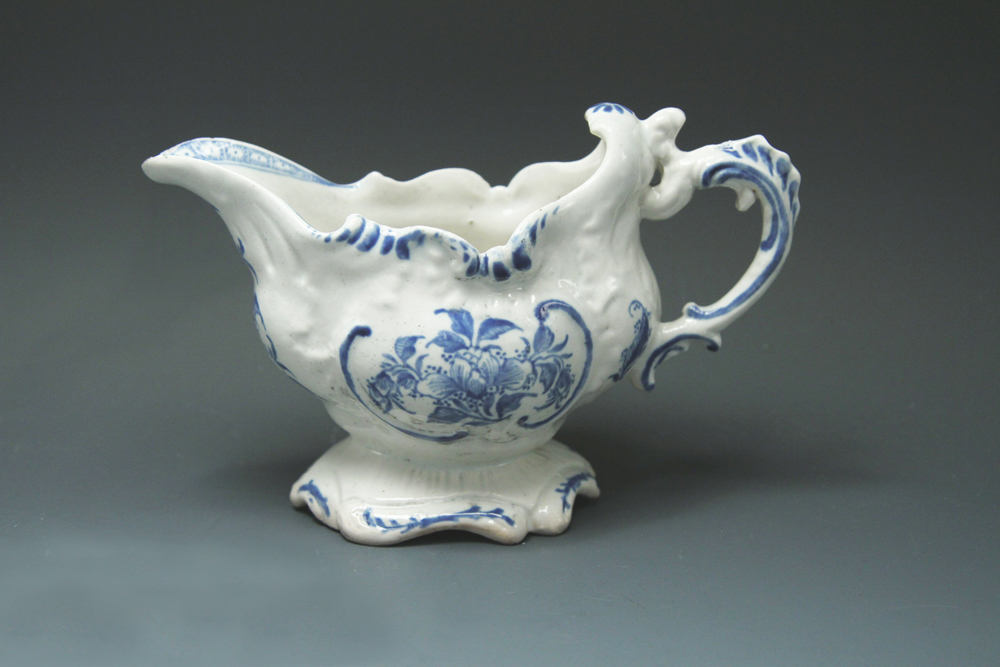
Crisp’s time at Vauxhall came to a sticky end when his shipping activities made him Bankrupt. In 1766, in a short – lived attempt to produce porcelain at Bovey Tracey in Devon, he manufactured this sauceboat from an earlier Vauxhall design. See my paper on the scientific work that helped attribute this ultra – rare object.
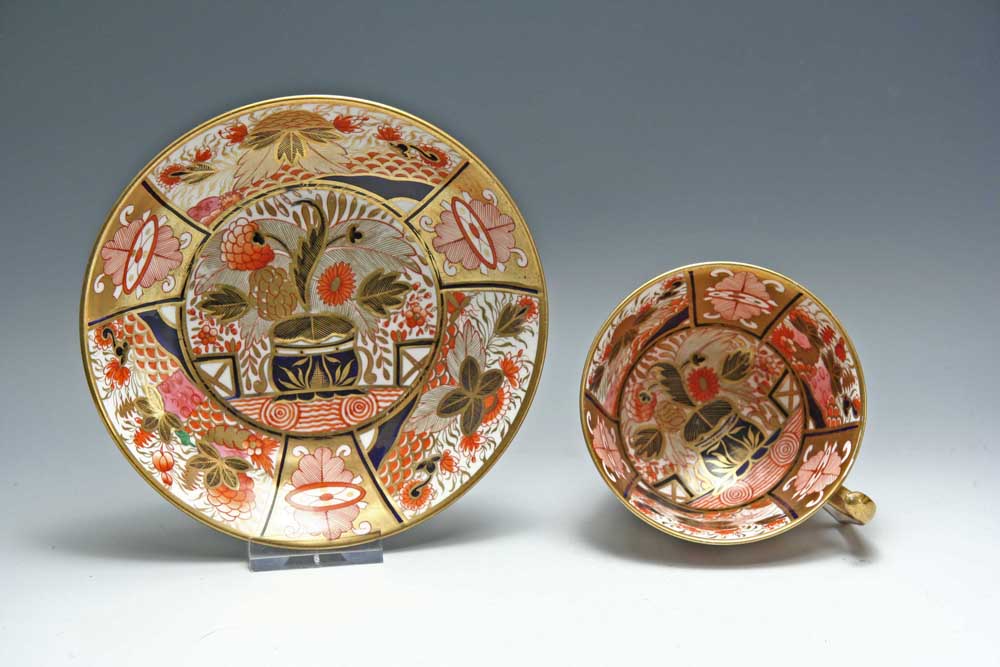
A Spode teacup and saucer in pattern 963, c 1815. Regency porcelain was an early collecting interest. Nowadays it seems to be vastly under-rated and thus a great place to invest. The fine painting and gilding of this piece required a number of firings and that made it a spectacular service to use in the candlelight of the early 19th century.
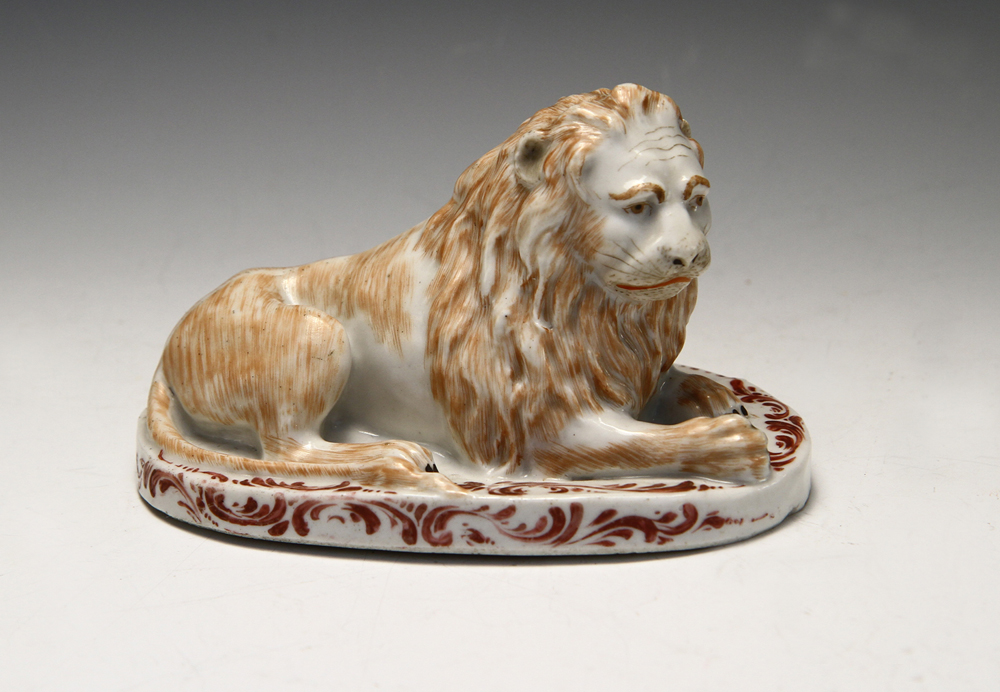
A remarkable Lion figure made c 1768-70 at the Plymouth factory. This factory was the place where William Cookworthy pioneered and patented the use of a Chinese style hard paste porcelain. Manufacturing in Plymouth was not ideal as the cost of obtaining raw materials was high. In 1770 he moved the factory to Bristol where he later sold out to Richard Champion. See my book for more on the Bristol factory.
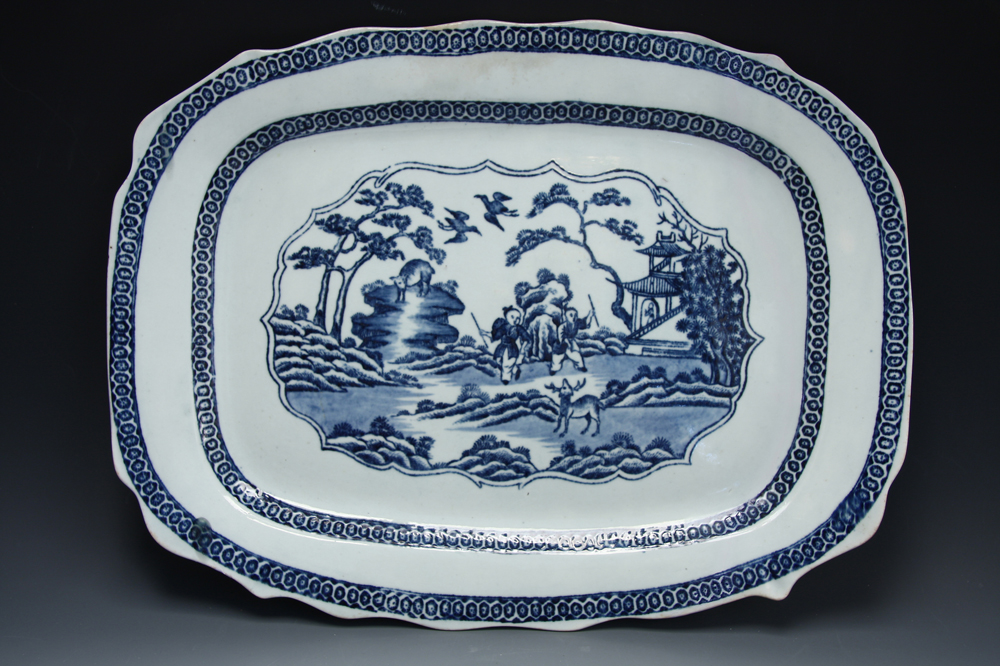
A very large (16.5 inch) meat platter made by the John Pennington factory in Liverpool, c 1780. Probably printed with a washed colour in the foreground it depicts a Chinese landscape with a deer hunt. English factories struggled to make objects of this size with a soft paste recipe so this was a considerable achievement.
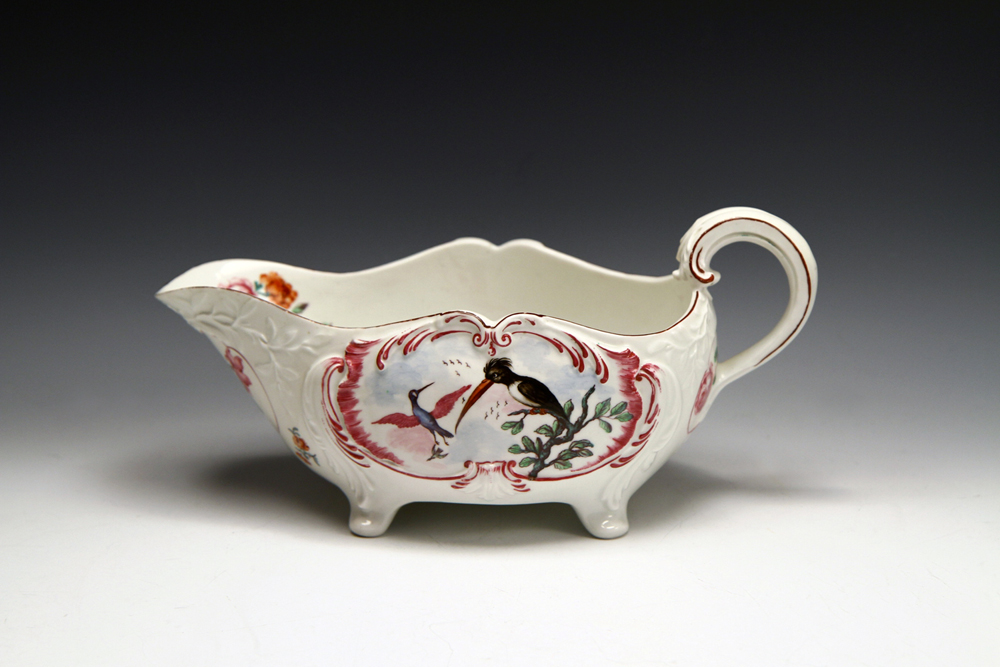 A fine Chelsea sauceboat c 1754-6. Painted with slightly crazy birds, possibly by Jefferyes Hammet O’Neale. This was a rare pattern with its rococo scrolled cartouches – the Wrought Pattern. See Patricia Ferguson, ECC Transactions, Volume 24.
A fine Chelsea sauceboat c 1754-6. Painted with slightly crazy birds, possibly by Jefferyes Hammet O’Neale. This was a rare pattern with its rococo scrolled cartouches – the Wrought Pattern. See Patricia Ferguson, ECC Transactions, Volume 24.
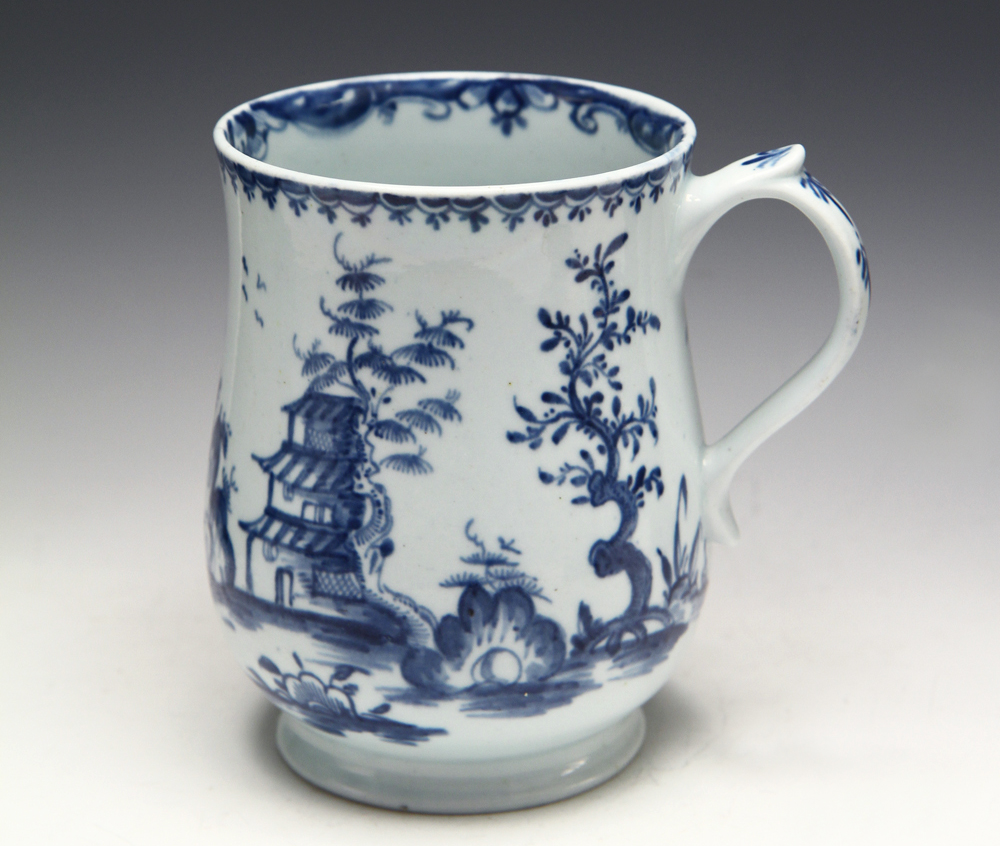
A fine Lowestoft mug c 1764-5. The charming style of painting for which Lowestoft is known is apparent in this object which uses a chinese idiom with relaxed and easy brush strokes. Formerly in the collection of Geoffrey Godden.
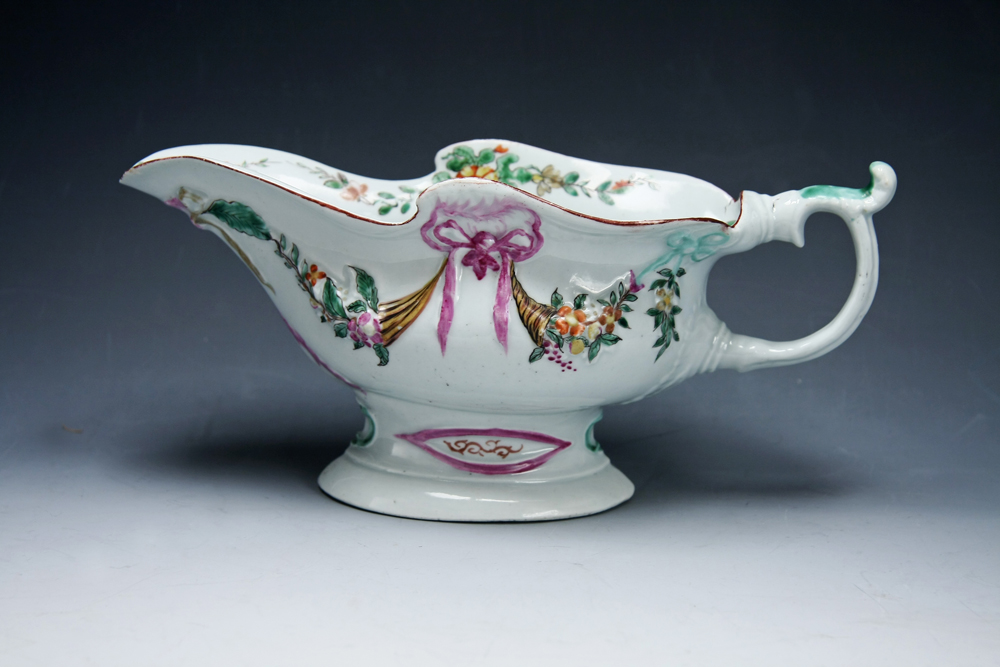
A very fine Worcester sauceboat c 1752. This shape was developed at Lunds Bristol and moulds were probably tranferred when Worcester acquired the Lunds concern. Some sauceboats were made in Bristol and painted in Worcester although this example is more likely to have been made slightly later when the soapstone paste was showing signs of improvement.
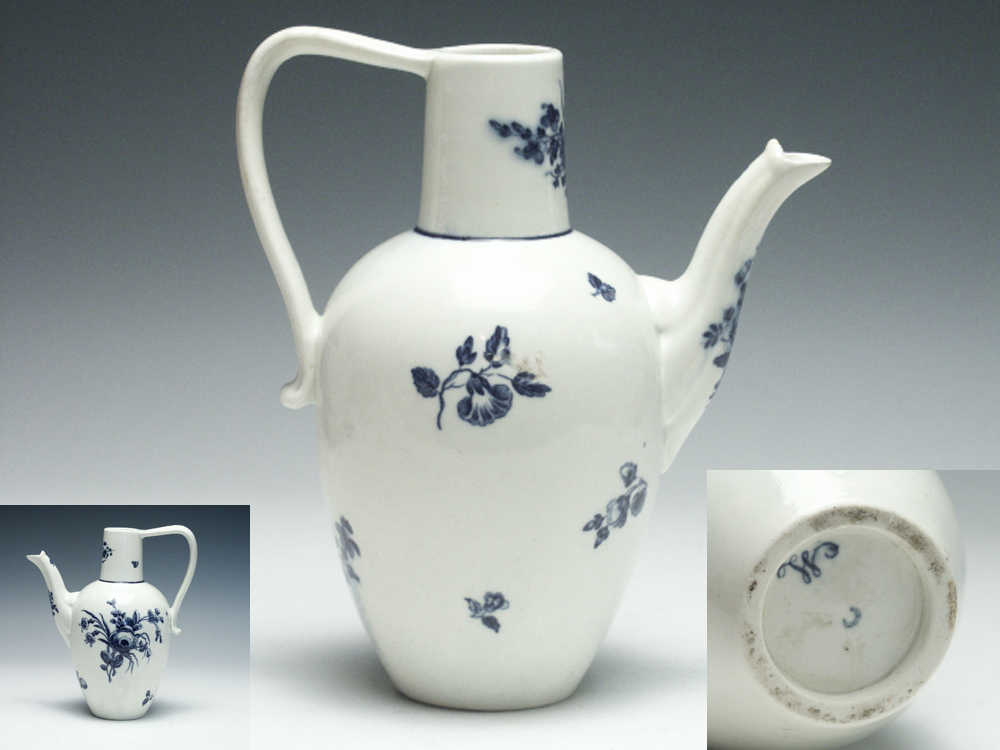
A rare Worcester wine ewer c 1765-70, possibly influenced by islamic or Chinese ceramic shapes. The use of two separate marks underneath is most unusual.
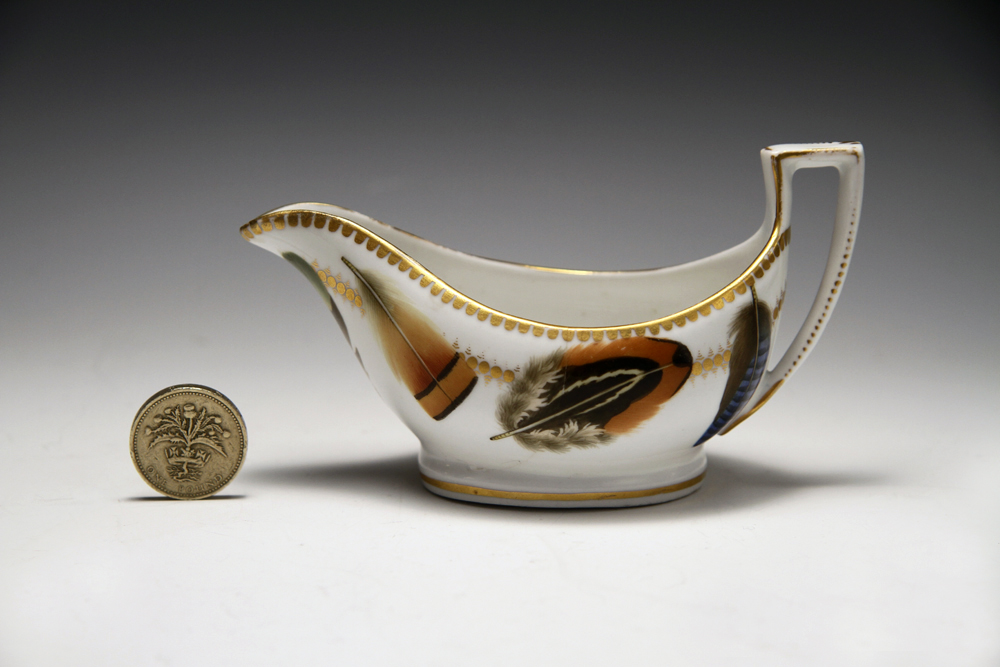
Chamberlains Worcester could give Flight and Barr a run for their money when it came to painting feathers. This example is the creamer from a miniature tea serve dating from c 1810. It was featured on the cover of Michael Berthoud’s book, A Cabinet of Creamers.
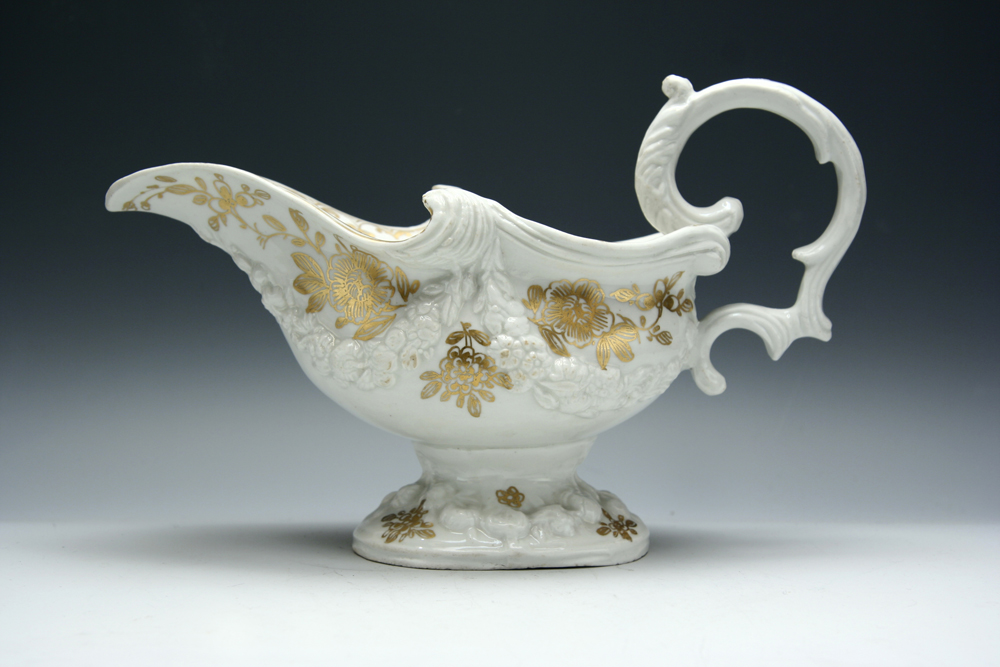
A Bow sauceboat c 1750 which competed directly with the Lunds bristol example above. The rococo silver shape is enhanced by moulded flower swags and a gilt pattern. This model was also made with a rare dragon handle. See the cover of my sauceboat book.
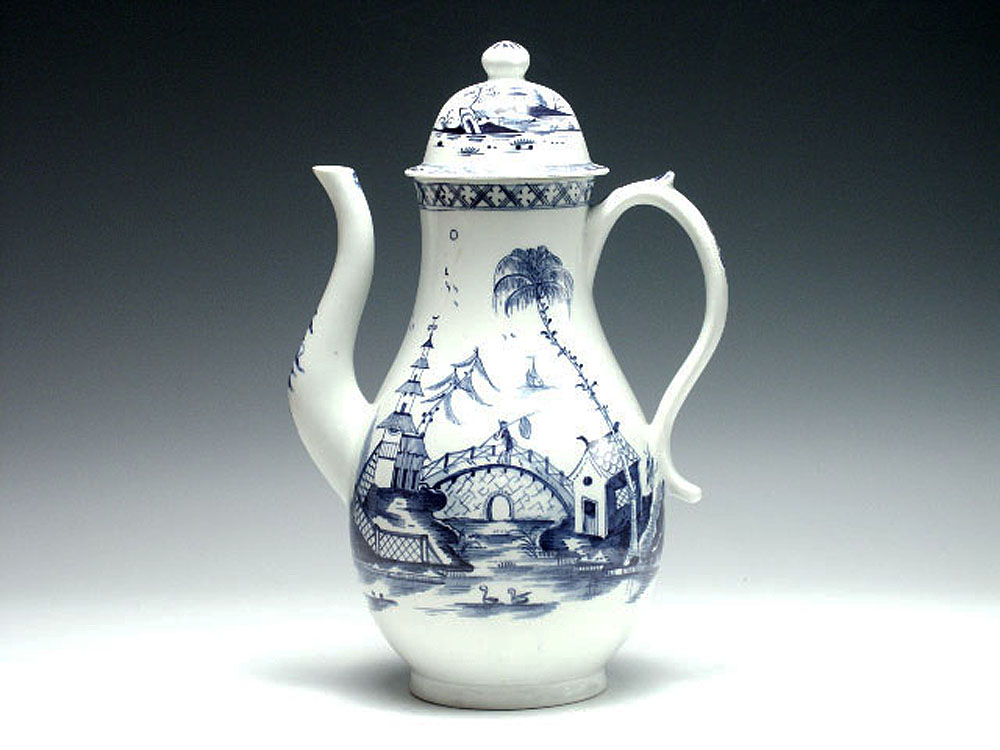
A nicely painted Lowestoft coffee pot, c 1765-70. Well painted with a Chinese landscape with buildings and a bridge. A very nice example of Lowestoft blue and white decoration.